Selecting the right control valve is a critical factor in ensuring plant reliability, cost control, and operational safety. In industries like mining, energy, and oil sands, where severe service conditions are common, poor valve selection can lead to excessive wear, unplanned downtime, and safety risks.
This article provides a practical guide to understanding cavitation, flashing, and noise, which are the three major severe service challenges in control valve operation. It draws directly from CGIS’s technical expertise and the full whitepaper, Selecting the Correct Control Valve.
For a refresher on valve fundamentals, visit our control valve basics. If your operation faces severe service challenges, our severe service valve solutions offer proven designs that improve performance and extend valve life.
Understanding Severe Service Conditions
Severe service valves represent a small percentage of a plant’s valve population but often account for a large portion of its maintenance and lifecycle costs. These valves face extreme pressure drops, temperature swings, erosive media, and high velocities that are common in critical operations such as black liquor flow, boiler feed water, HP steam, turbine supply and more.
Choosing the correct valve early in the design process can help avoid costly redesigns or replacements later. The decision often comes down to CAPEX vs OPEX: low upfront cost versus long-term reliability and lifecycle savings.
Cavitation in Control Valves
Cavitation happens when the fluid pressure inside the valve falls below its vapor pressure, forming vapor bubbles that collapse as pressure recovers downstream. The energy released from this collapse can exceed 180,000 psi causing severe erosion to valve internals and piping.
Fluid properties, pressure differential, temperature, and valve geometry all play key roles in how and when cavitation occurs. Water is often used as a reference fluid, but real-world media like slurry, chemicals, or high-solids fluids in mining and oil sands behave differently.
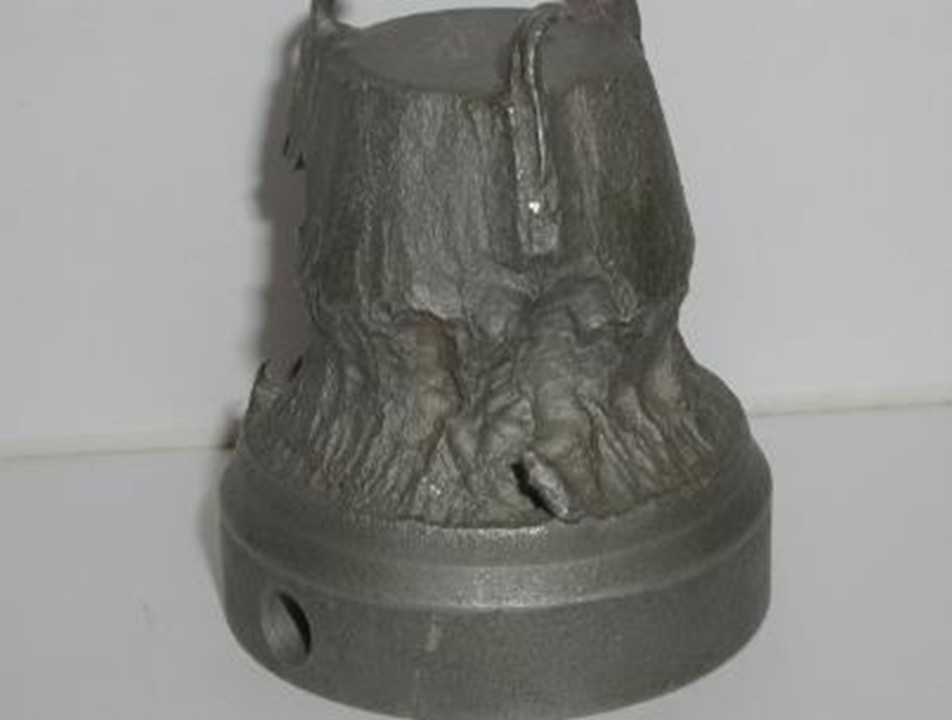
Recognizing the Signs and Effects
Cavitation presents distinct and measurable symptoms in the valve and piping system, often signaling that process conditions are trending toward damaging levels. Understanding these indicators is key to early intervention.
- Erosion: Collapsing vapor bubbles damage metal surfaces, creating rough pitted areas.
- Corrosion: Cavitation removes passive layers, accelerating corrosion.
- Noise and Vibration: A distinct hissing or hammering noise downstream of the vena contracta, often with damaging vibration.
- Flow Instabilities: Changes in fluid density can cause early choking.
These signs often appear gradually but provide early warning that a system may be operating outside acceptable conditions. Identifying them promptly helps reduce the risk of progressive damage, which can be more expensive and time-consuming to correct later.
Assessing Severity of Cavitation
Evaluating the severity of cavitation involves determining how close the operating point is to damaging flow conditions. Manufacturers rely on coefficients like FL, Fi, and Kc, along with noise data, to define distinct performance zones:
- Green Zone: No cavitation
- Yellow Zone: Tolerable — may be managed with hardened trims
- Red Zone: Severe — requires engineered solutions
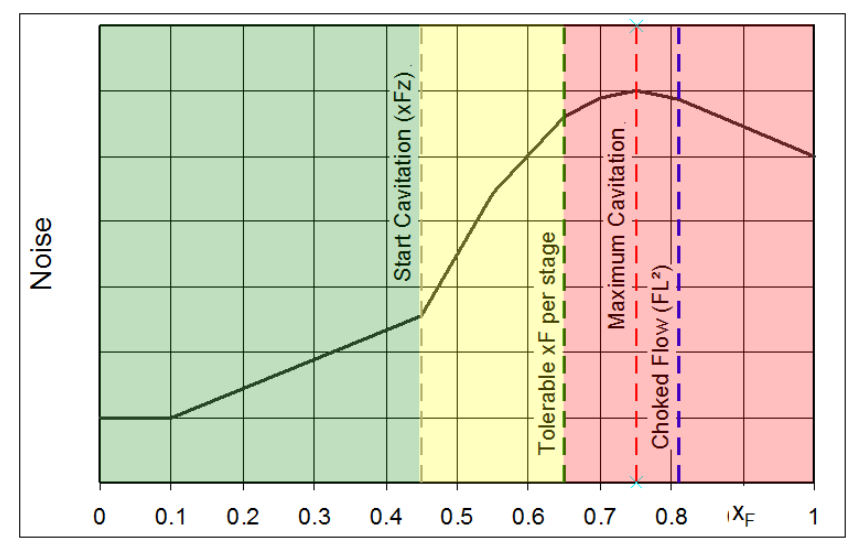
Recognizing where the operating point sits on the severity curve allows engineers to decide whether a minor trim modification or a full valve redesign is required. This is an essential step in developing long-term performance strategies.
Engineering Solutions for Cavitation
Engineering approaches to cavitation aim to either contain, prevent, or minimize the damaging effects before they escalate. The chosen method depends on the severity and duration of exposure:
- Containment: Isolating vapor collapse away from trim using cages or drilled hole retainers.
- Prevention: Using multi-stage anti-cavitation trim or axial flow control valves to lower pressure in stages.
- Process Modification: Adjusting backpressure or relocating the valve (when possible).
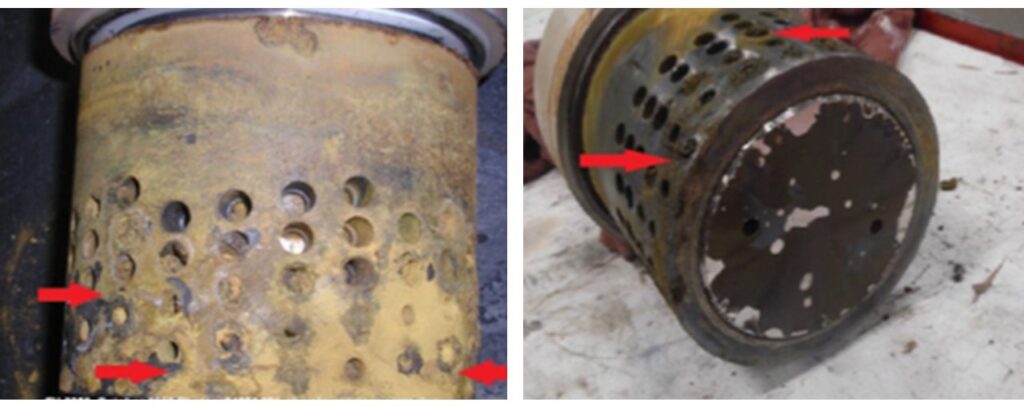
Selecting the right method early in the design stage can reduce maintenance intervals, minimize unplanned downtime, and extend the service life of critical components.
Flashing and Its Impact on Valve Performance
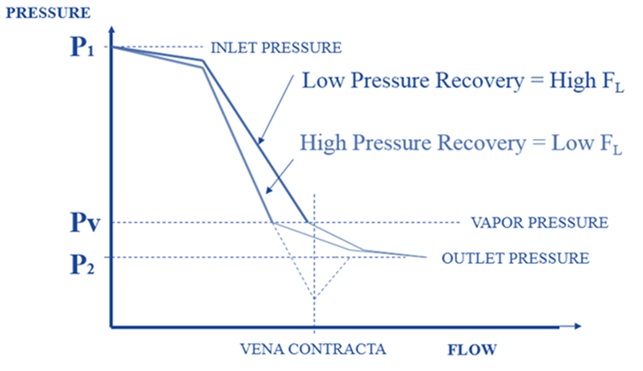
Effects of Flashing
Flashing introduces unique wear patterns and flow behaviors that differ from cavitation. Recognizing these effects is essential for proper valve selection and sizing.
- Severe erosion on trim and body, often smooth and polished compared to cavitation’s rough surface.
- High outlet velocity, increasing downstream wear and noise.
- Potential mis-sizing if flashing isn’t accounted for in valve selection.
Flashing is sometimes misdiagnosed as cavitation, but unlike cavitation, vapor bubbles do not collapse. This means conventional containment approaches may not be effective, making accurate diagnosis critical in selecting the proper valve design.
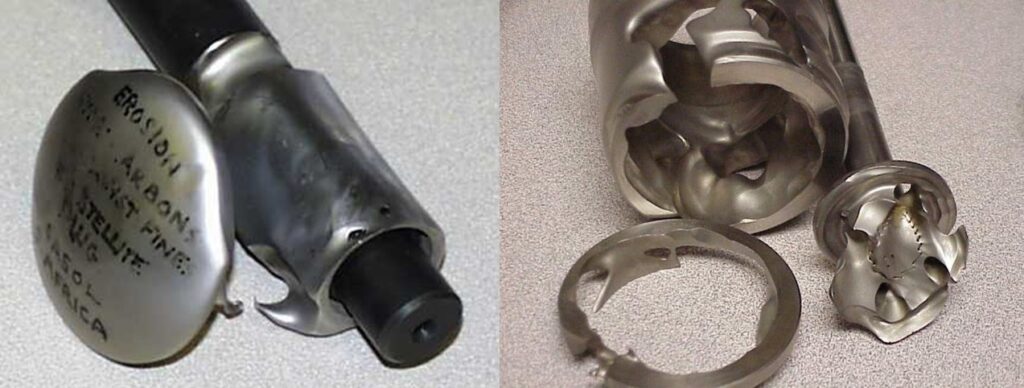
Engineering Strategies for Flashing
Mitigating flashing requires engineering interventions that control outlet velocity, redirect impact, or increase downstream pressure to limit damage.
- Harder materials: Chrome-moly body and hardened trims can resist erosion.
- Angle body valves: Direct energy away from critical surfaces.
- Back pressure plates: Raise downstream pressure to minimize flashing.
- Velocity control: Keep outlet velocities below 500 ft/s to reduce impact.
Addressing flashing during valve sizing and specification offers better control and cost savings compared to post-installation retrofits. Proactive design decisions ensure stable flow conditions and reduced wear over time.

Control Valve Noise
Noise in control valves typically arises from turbulence and sharp pressure reductions, which are then amplified downstream. Identifying the source helps determine the best control method.
- Mechanical noise: from vibration of components.
- Hydrodynamic noise: from liquid turbulence.
- Aerodynamic noise: from gas expansion and pressure drop.
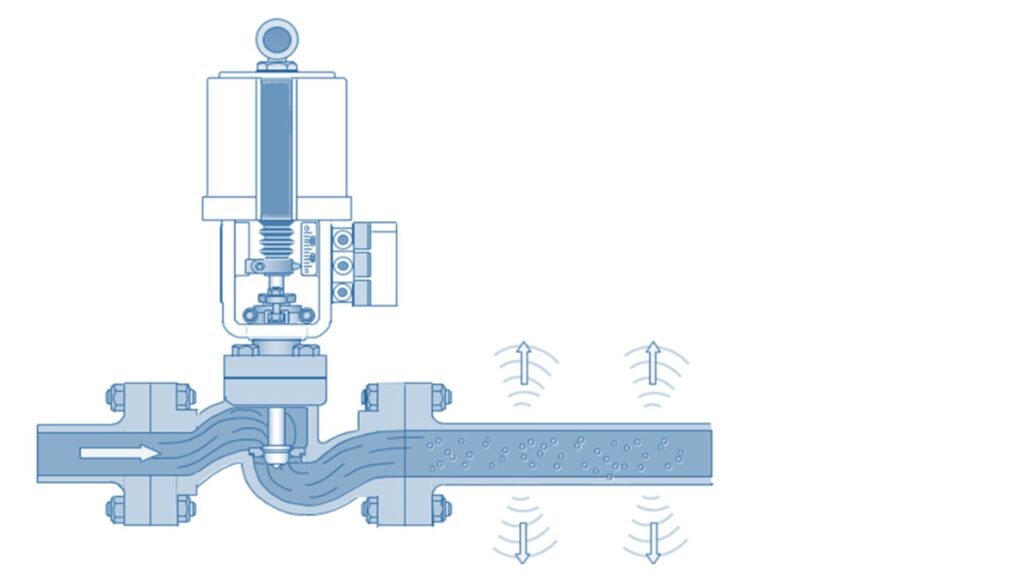
These factors can combine to create high sound pressure levels that affect equipment, safety, and personnel comfort.
Noise Prediction and Control
Industry standards such as IEC 60534-8 provide prediction methods. Noise levels rise exponentially with velocity, so small changes can have large impacts. Exceeding 85–90 dBA can lead to equipment damage or safety hazards.
Accurate noise prediction plays an important role not only in equipment reliability but also in meeting workplace noise exposure and environmental safety requirements. This early stage assessment can prevent operational restrictions later.
Practical Attenuation Methods
Noise attenuation focuses on controlling pressure drop, flow velocity, and transmission. Multiple strategies can be combined for more effective control.
- Multi-stage noise attenuation trims to lower pressure gradually.
- Downstream plates and diffusers to reduce sound energy cost-effectively.
- Pipeline design (thickness, insulation) to absorb or deflect noise.
- Orifice tuning to push noise outside the audible range.
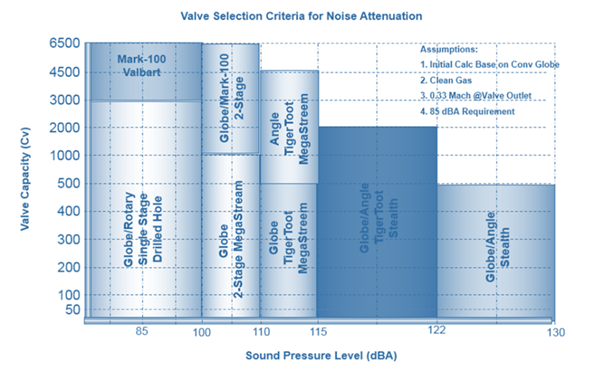
Effective attenuation improves total system performance by stabilizing flow conditions and minimizing vibration-related damage. This contributes to extended service intervals and more predictable maintenance schedules.
Selecting the Right Valve for Severe Service
Selecting the correct valve for severe service impacts system reliability, maintenance costs, and safety. Severe service applications demand purposely built solutions that can withstand extreme conditions such as high pressure drops, flashing, cavitation, and noise. Standard valves often fail prematurely in these environments, leading to avoidable downtime and unplanned maintenance.
In industries like mining, energy, and oil sands, where these severe service conditions are common, the selection process requires more than matching valve size to line size. It involves understanding the process behaviour, evaluating fluid characteristics, and applying proven engineering standards.
For an indepth severe service valve considerations, visit our Severe Service Valves article series.
Engineering and Operational Considerations
Several practical factors influence whether a valve will perform reliably in severe service. These considerations help bridge the gap between theoretical sizing and real-world operating conditions, ensuring long-term stability and predictable performance.
- Trim and body material selection
- Frequency and duration of exposure to cavitation, flashing, or noise
- Available space and process constraints
- Lifecycle cost vs upfront price
Conclusion
Cavitation, flashing, and noise may begin as performance concerns but quickly become major cost, safety, and reliability issues. Choosing the correct control valve is about engineering alignment with the process, not simply selecting a standard product.
Whether through multi-stage anti-cavitation trim, axial flow control valves, or noise attenuation solutions, the right selection can protect your operation and extend valve service life in mining, energy, and oil sands.
For complete technical data, case studies, and reference charts, see our full paper: Selecting the Correct Control Valve
At CGIS, we provide valve solutions for every industry, from general service to the most severe applications. Contact us today for a free consultation to find the right control valve for your process.
References:
- Tagieva, A., & Waters, R. (2019). Selecting the Correct Control Valve.
- ISA-RP75.23-1995 “Considerations for Evaluating Control Valve Cavitation.”
- IEC 60534-8 Noise Prediction Methods.
- MSS Severe Service Valve definitions.
